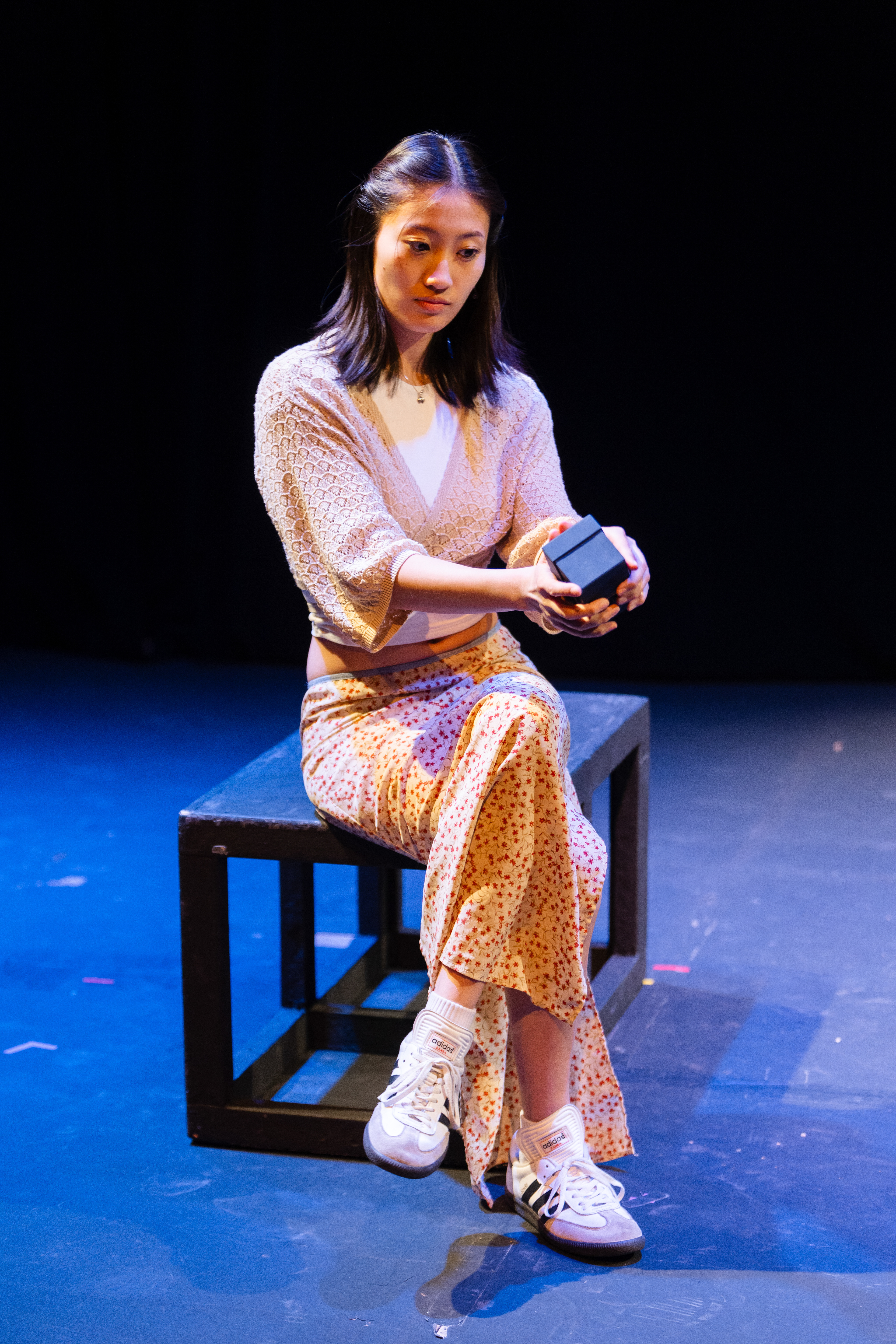PRODUCTION STILLS
Photos by Tom Daly













PROCESS
I began my design process with a preliminary scan through the material to understand the *vibes* of the text, followed by immediate notes and thoughts, then another, more in-depth dive through the text.
Throughout the design and planning process, I was in constant communication with the directors and playwrights to gather visions and ideas for their pieces. I attended rehearsals, reviewed rehearsal notes, and made sure I was in the loop as often as possible when design decisions were being made. Playwrights and directors had outlined specific lighting requests in their design packet early in the process so I had ample time to figure out if their asks could or couldn't be accommodated. For instance, one show requested a zoomable spotlight. As we did not have a motorized iris available, we settled for a static iris special for the effect, which ended up getting a shout out in the Cavalier Daily article.
New Works 24 was built off a rep lighting, sound, and seating plot. It's basic proscenium with a front light system, high cross, LED down and back light, and gobo crosses. It's flexible enough to cover the bases I need, but there were certain things I would have liked, such as more isolation and variety between the top and back washes, different color for the front light, and more flexibility for specials. I think certain acts could have benefitted greatly from more specials, or at least one moving specials that could take care of all of those small moments that needed isolation from the 6 massive acting areas I was working with. More on specials later.
Most of the tangible design process comprised of creating some looks for scenes the day before tech, then reviewing my ideas with directors. Teching New Works was an incredible opportunity to work with a production team, cast, and design team entirely comprised of students (minus our PSM, Xuled Stiff), while also collaborating with our creative faculty. Dave Dalton and Doug Grissom, the coordinators of New Works, plus lighting and sound supervisors Steven Spera and Wren Curtis, all sat in through tech to offer advice, critique, and support. Directors and actors were challenged on choices, and I was guided through making informed design choices. Some directors were very certain what they wanted their lighting to be, while others didn't have any concrete idea and deferred to me. This range let me fire on all cylinders and work in a variety of decision making scenarios over the course of tech.
SPECIALS
I was allowed a limited number of specials given the time and labor constraints we had. The only requested special was the zoomable spotlight, which I did my best to accommodate. I also added a backlight special for the ending moment of the 3rd show, where all three characters walk towards the audience signaling their readiness for the wedding. The last 6 specials were sharply focused rectangles for each of the zoom characters in the last show. Because they were all on stage close together yet supposed to be in their own houses, I wanted a way to cut them out into little picture frames, just like Zoom does. Individual playing frames were my take on this solution, however it falls apart halfway through the show when the characters begin interacting with each other and any sense of setting falls apart.